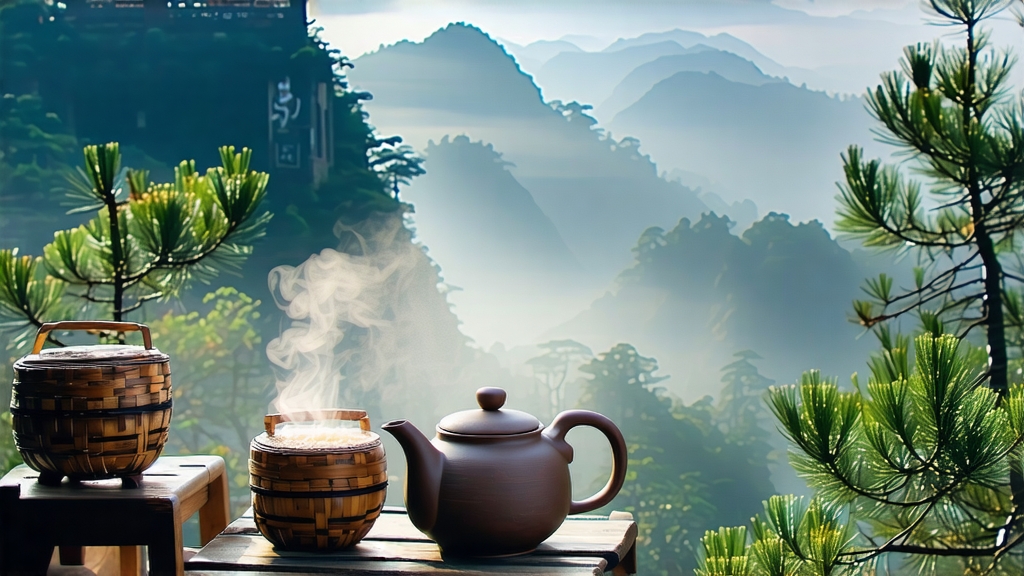
Lapsong Souchong is the tea that startled the seventeenth-century Dutch and British merchants when they first tasted it in the port of Amoy. Its heady perfume of pine smoke and longan fruit drifted across the decks of East Indiamen and became the prototype for every black tea that followed. Today, while the global market chases bright Ceylon liquors or malty Assam breakfast blends, the original “bohea” still curls out of the Wuyi Mountains of northern Fujian, carrying in its amber liquor the story of how China taught the world to drink black tea.
History: from Ming loyalists to London coffee-houses
Local legend fixes the birth of Lapsang Souchong in 1646, when Qing troops pressed into the Wuyi highlands. Monks and tea farmers, hurrying to dry the fresh leaves before the soldiers arrived, dried them over hastily built pine fires. The accidental smoke found willing buyers among the Dutch, who by 1604 had already established a trading post on the Fujian coast. By the 1660s Samuel Pepys was writing of “a cup of tee (a China drink)” served in London; the leaves were almost certainly Souchong, shipped through the port of Xiamen then labeled “Amoy.” The British East India Company soon monopolized the trade, and the name “Bohea” (from the Wuyi range) became generic for all black teas. When Scots botanist Robert Fortune smuggled tea plants and craftsmen to India in 1848, he carried with him the withering, rolling and smoking techniques first perfected on Tongmu village’s pine-wood benches.
Micro-terroir: why only Tongmu tastes like Tongmu
The national nature reserve that cradles Tongmu village is a narrow, mist-filled gorge where the Chong’an River funnels cool, humid air between 1,200-metre granite cliffs. The mean annual temperature is 18 °C; humidity hovers at 80 %. Only six small hamlets—Mashu, Guadun, Miaowan, Tongmu Pass, Daxin and Caixia—lie inside the core 60 km² permitted to produce authentic Lapsang Souchong. Outside this zone, the same cultivar (Xiao Ye Zhong, “small-leaf seedling”) produces pleasant but noticeably lighter tea, lacking the resinous depth that centuries of pine smoke have imprinted on the local leaf memory. The soil is a stony, slightly acidic laterite rich in potassium and manganese; the mountain mist filters sunlight into a soft, shifting chiaroscuro that slows photosynthesis and concentrates amino acids, especially L-theanine, giving the tea its signature sweet-savory balance.
Cultivar and leaf grade hierarchy
Within the protected zone, farmers recognize three ascending grades of leaf:
- Leaf Souchong (third leaf down) – brisk, slightly smoky, used for everyday drinking in Fujian.
- Strip Souchong (second leaf) – the international “classic” grade, long wiry leaves with a coppery sheen and a bright, complex cup.
- Bud Souchong (unopened leaf shoot) – marketed as “Jin Jun Mei” when processed without smoke. When the same buds are smoked, they become “Xiao Zhong Jin Hao,” a downy gold-tip tea that yields a honeyed, incense-laden liquor prized in Beijing and Shanghai.
Craft: the eight stages of pine-smoke alchemy
Authentic Lapsang Souchong is still made only during the cool weeks between Qingming and Grain Rain, when the leaf is tender yet resilient enough to withstand the rigorous smoke schedule.
- Plucking: one bud plus two leaves, picked before 10 a.m. while the mountain dew is still intact.
- Withering: leaves are spread 3 cm deep on bamboo trays set over a shallow canal of slowly smoldering pine embers. For twelve hours the tea master alternates between opening and closing the wooden shutters, coaxing moisture out of the leaf while allowing cool gorge air to prevent “stewing.”
- Rolling: the withered leaf is kneaded for 45 minutes in a cast-iron trough lined with bamboo slats. The cell walls rupture, releasing catechins and polyphenol oxidase that will later oxidize into theaflavins and thearubigins.
- Oxidation: rolled leaf is piled in pine-wood crates covered with wet cloths. Temperature is held at